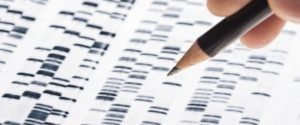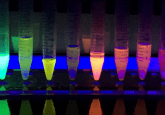A silent witness: how analysis of pollen can solve crimes

The specialized field of forensic palynology has been slow to garner worldwide momentum. With many advantages over other biological avenues of evidence, why is this technique so under-utilized and who are the giants of forensic palynology?
Forensic palynology – the study of pollen and spores to prove or disprove a connection in criminal cases – has been part of the forensic toolkit since 1959 when the analysis of pollen and spores was first practiced in relation to a forensic investigation in Austria.
The original forensic palynologist
A man had gone missing during a trip down the Danube river. Another man with a motive to kill him was arrested and charged with his murder; however, there was no body and not enough evidence to build a case.
A pair of muddy boots belonging to the defendant were discovered during the course of the investigation and palynologist Wilhelm Klaus (University of Vienna, Austria) was called upon to analyze the mud. He found pollen from modern spruce, willow and alder trees, as well as 20-million-year-old fossil hickory pollen grains, which had eroded from exposed sediment of Miocene age.
There was only one small area near Vienna that fitted all these characteristics. When this information was detailed to him, the defendant confessed to the murder and led the authorities to the position of the victim’s body in the exact area pinpointed by Klaus’ analysis.
Despite this initial success story, forensic palynology has been slow to be accepted worldwide. That being said, there are now a number of criminal cases that have applied the science of forensic palynology to aid investigations due to its advantages over other forms of biological and ecological evidence sources.
Leaves and branches above the rest
Pollen and spores are too small to be seen by the naked eye (7–200m) and criminals rarely realize that they have collected them from a crime scene. They can attach to most surfaces and can become deeply embedded in clothing, which means washing with detergent doesn’t remove all grains.
Pollens are also resistant to decomposition due to a cell wall composed of cellulose and sporopollenin – one of the most chemically resistant organic molecules known. This means they can be used as evidence many years after a criminal incident has taken place and they can also be preserved for hundreds of millions of years under the right conditions.
Arguably the most important attribute for forensic evidence is that they have complex morphologies that can lead palynologists back to the parent plant they came from and allow them to create a unique picture of the location a crime may have occurred. Pollen does not spread very far or evenly due to variations in airflow and physical obstacles, leading to large differences in pollen recovery over short distances.
Despite these clear advantages, the technique has been underused in the USA due to the lack of investment and resources in this field; there are limited institutions that can train or fund researchers, leading to a lack of specialists and a lack of knowledge.
 Can modern DNA sequencing solve history’s greatest murder mystery?
Can modern DNA sequencing solve history’s greatest murder mystery?
Two geneticists declare the case of Jack the Ripper solved, having used mitochondrial DNA analysis to supposedly identify the notorious killer.
Forensic palynology in the USA
One of the few US institutions with a palynology laboratory is Texas A&M University (TX, USA), where Vaughn Bryant is the director. After the terrorist attacks on 11 September 2001, he was approached to assist in identifying the perpetrators, and then spent some years analyzing samples for US intelligence agencies. Bryant agreed to apply his knowledge forensically for the government on a part-time basis from 2006, working mainly on illegal drug imports.
Bryant then paved the way for US Customs and Border Protection (DC, USA) to require a full-time forensic palynologist, so he trained his student for the job, Andrew Laurence, who was hired in 2011 while still in grad school. Laurence then became the USA’s only full-time forensic palynologist, until he was joined in 2015 by Sarah Ferguson.
Together, they assist in identifying the origins of illegal drug imports, as well as for applications in counterterrorism, explosives and identifying criminal suspects, to name a few.
There are approximately 380,000 different types of pollen grain and palynologists have the task of identifying grains they find by eye, through use of microscopes. Laurence and Ferguson have a reference library of approximately 6000 pollen types in-house at the Customs and Border Protection laboratory, with access to 30,000 additional samples at the nearby Field Museum of Natural History (both IL, USA).
According to Bryant, the USA has spent a lot of money – millions – trying to develop a computational method for the identification of pollen, which he believes will never work due to the sheer capacity of pollen grains out there. He believes the money would be much better spent investing in training more forensic palynologists.
This – alongside most palynologists coming out of grad school preferring to follow a career path where they will earn more money, such as in the oil industry – is a key reason why the USA cannot currently make the most of this highly-specialized technique. Laurence’s lab has a current backlog of cases between 18 months – 2 years, so new recruits are highly sought-after.
The Daubert standard
The information gathered by Laurence and Ferguson is not used for criminal prosecution in the USA, as it does not yet meet the Daubert standard, but for intelligence purposes and new investigative leads. However, experts in New Zealand and the UK can tell a different tale.
Bryant originally discovered the applications of forensic palynology through its use by New Zealand and British governments in the 1970s – where pollen analysis is admissible as evidence in courts – who embraced the technique in law enforcement much quicker than the USA did.
One of the world’s leading forensic palynologists, New Zealander Dallas Mildenhall, rose to fame in 1983 when he helped solve the case of missing schoolgirl Kirsa Jensen. “I was able to show that a particular individual that the police were suspicious about was the person who was involved in that girl’s disappearance,” he explained.
Mildenhall often collaborated with both Bryant and the UK’s Patricia Wilson, who has worked on and provided evidence in many high-profile murder investigations. He has worked on 300–400 international cases since 1983 but is concerned for the future of the field. Due to the nature of their work, it is expensive, and palynologists often are called in only as a last resort.





